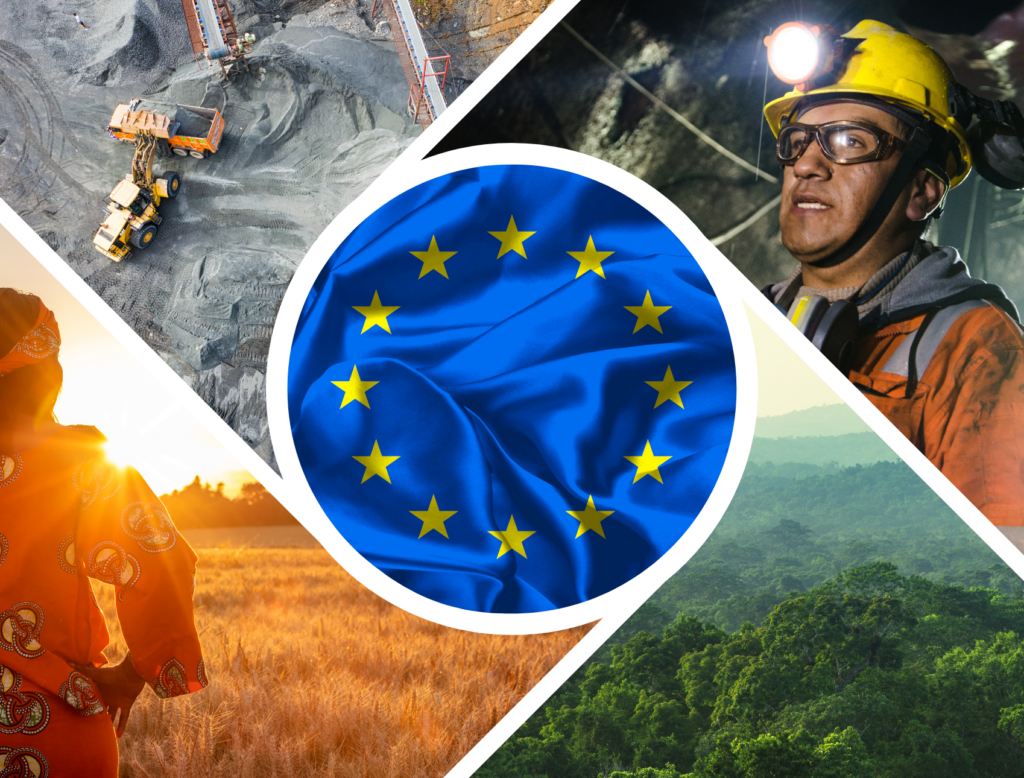After nearly a year of deliberations, the European Union reached a provisional agreement in implementing the Critical Raw Materials Act (CRMA), a precedent-setting policy on mining that will end its heavy reliance on imports for raw materials that are considered strategic for new technologies, including those used for renewable energy and transportation.
As world players are racing to secure a steady supply of minerals, the EU’s policy framework, when adopted, promises to increase and diversify the region’s critical raw materials supply, strengthen circularity and recycling, and support research and innovation on resource efficiency and the development of substitutions.
Sounds promising? Let us break these down.

What is Good About the CRMA?
The EU wants to secure supply chains for cobalt, copper, lithium, graphite, and other transition minerals by breaking its dependency on sourcing countries, particularly China.
What we like about the proposal is that it sets circular economy benchmarks that could improve the regional bloc’s sourcing. Recent negotiations increased the recycled sourcing target to 25%, bringing it closer to what is technically possible, according to the University of Technology Sydney.
What is Bad About the CRMA?
The provisional CRMA goes against the principles of the UN Declaration on the Rights of Indigenous Peoples and international human rights standards. It does not require Free, Prior and Informed Consent (FPIC) from EU members or other supplying regions. Instead, CRMA offers consultations—a perfunctory mechanism that does not enable Indigenous Peoples and communities to decide on projects that will impact their lives and lands.
The provisional CRMA also streamlines permitting for extraction projects. This process reduces public participation, consultation, and community consent. As we have often seen, “rubber stamp” permits lead to public protests and protracted litigations because many governments have veered towards mineral extraction at the expense of the well-being of people.
In addition, the EU proposal leans heavily on voluntary certification, which opens the doors to industry control. The mining industry has long resisted high-bar social and environmental standards. Without rigorous requirements for certification systems, the EU is in danger of authenticating greenwashing schemes similar to the Sustainable Forestry Initiative.
The absence of community consent, mechanisms for meaningful multi-sectoral participation, and mandatory certification regulations in the provisional CRMA could be more precise. These will only reinforce exploitative practices and corruptive supply chains, further entrenching the mining industry’s long history of human rights abuses, injustice, and environmental destruction for generations to come.
How Did This Happen?
The sad and hard reality is that money buys policy.
Friends of the Earth Europe reported that mining companies, metals- and minerals-using companies and their lobby groups spent more than €21 million (US$26.4 million) a year to advocate their interests. They have sponsored events and held nearly 1,000 meetings with high-level decision-makers since December 2014. This roughly equals two weekly meetings since the CRMA policy came under consideration.
Is it a wonder why today’s policies reflect the mining industry’s “wish list”?
Like the US, the EU has implemented new laws to expedite the transition to renewable energy and transport, including implementing policies that incentivize electric vehicles. Unlike the US, the EU’s implementation of a region-wide minerals policy could have set new standards for mining within the EU and procurement from other parts of the world.
However, the mining industry has won over EU legislators supporting streamlined permitting and weaker standards. But it may not be too late. We can raise attention to what is needed because the transition to clean energy represents our best opportunity to end our reliance on dirty, extractive industries for our global supply.
What Are the Solutions?
FPIC must be a non-negotiable benchmark in the CRMA. Bottom-up participation, consultations, and consent are critical. Requiring consent places people at the center of positive action in deciding which projects and developments are best for their communities.
Higher standards and a civil society co-governed model must be established to secure mining permits and certifications. The Initiative for Responsible Mining Assurance (IRMA), of which Earthworks is a board member, conducts the only third-party assessment of industrial-scale mine sites for all mined materials. It is led by the private sector, local communities, civil society, and workers. More importantly, IRMA has the world’s most comprehensive standard for mining. In tapping third-party auditing organizations, the EU can ensure performance transparency and true multi-stakeholder governance, where the voices of those directly impacted are heard and prioritized.
Develop strategic and fair partnerships with resource-rich countries in the Global South. Argentina, Chile, the Democratic Republic of Congo, and Indonesia are some countries attracting large mining investments. The EU can strengthen its coordinated monitoring of supply chains to mitigate risks, but only if it places equal value on the sustainable local development of sourcing countries. Moreover, the institutionalization of constructive engagement will be needed to replicate best practices to reduce our mineral dependency and safeguard the rights of local communities and Indigenous Peoples.
As the EU and the rest of the world mobilize a phase-out of fossil fuels to mitigate the impacts of climate change, one thing is sure: our transition to clean energy must not be built on mining that destroys communities and our environment.
We hope the EU and other countries stand firm on protecting Indigenous rights, human rights, biodiversity, and watersheds because our way of life, future, and humanity depend on them.
References and further readings:
- EU Provisional Critical Raw Materials Act text as of November 29, 2023
- Transport & Environment
- Securing Indigenous Rights in the Green Energy Economy
- European Environmental Bureau
- How to Strengthen the EU’s Critical Raw Materials Strategic Partnerships
- Initiative for Responsible Mining Assurance
- Earthworks’ Making Clean Energy Clean, Just and Equitable
